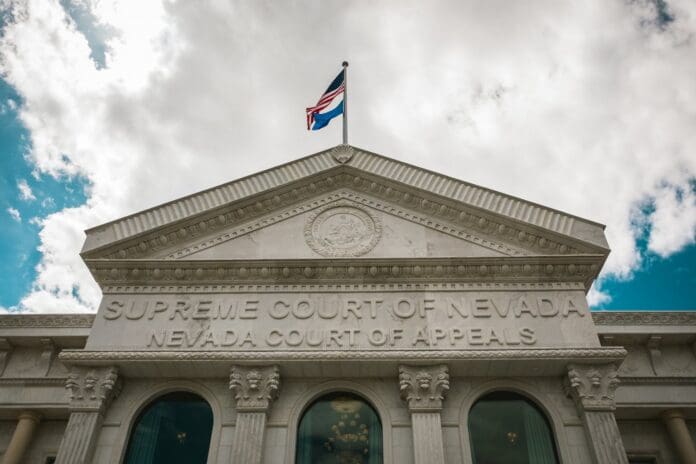
Just days before the U.S. Supreme Court agreed to hear the lawsuit challenging the Justice Department’s Final Rule on “ghost guns,” the Nevada Supreme Court overturned a lower court ruling and upheld that state’s restrictions on “unfinished frames or receivers.”
In the case Sisolak v. Polymer80, Nevada’s highest court on April 18 voted unanimously to reverse the lower court ruling, which had found the law to be unconstitutionally vague.
“The district court … concluded that the definition did not explain key terms or notify ordinary individuals precisely when raw materials would become an unfinished frame or receiver,” Justice Lidia S. Stiglich wrote in the ruling. “The district court also concluded that the definition enabled arbitrary and discriminatory enforcement. We disagree and reverse. The terms used to define ‘unfinished frame or receiver’ have ordinary meanings that provide sufficient notice of what the statutes proscribe, such that it cannot be said that vagueness pervades their texts.”
State Supreme Court justices also found that the law wouldn’t be overly complicated to enforce.
“We further conclude that the statutes are general intent statutes that do not lack a scienter requirement and do not pose a risk of arbitrary or discriminatory enforcement,” Judge Stiglich wrote. “The district court thus erred in declaring that the statutes are unconstitutionally vague and enjoining them.”
At issue was the language of the 2021 law that criminalized the possession, purchase, transport, receipt, sale and transfer of an “unfinished frame or receiver.” The language of the law defines an “unfinished frame or receiver” as: “a casting or a machined body that is intended to be turned into the frame or lower receiver of a firearm with additional machining and which has been formed or machined to the point at which most of the major machining operations have been completed to turn the blank, casting or machined body into a frame or lower receiver of a firearm even if the fire-control cavity area of the blank, casting or machined body is still completely solid and unmachined.”
The plaintiff in the original case, Polymer80, challenged the law, arguing that the language was unconstitutionally vague. And a Nevada district court agreed, citing three key points: the law does not specifically define blank, casting, machined body, frame or lower receiver, major machining operations and fire-control cavity area; the definition does not make clear precisely when a raw material becomes a prohibited unfinished frame or receiver; and the statues lack a scienter requirement.
In the end, however, the Supreme Court disagreed with that assessment.
“The district court erred in declaring that the definition of ‘unfinished frame or receiver’ in NRS 202.253(9) is unconstitutionally vague and in enjoining the enforcement of NRS 202.3625 and NRS 202.363,” Judge Stiglich concluded. “Given that the definition employs terms ascertainable by their ordinary meanings and that align with trade and industry usage, we conclude it is not vague.”
Read the full article here